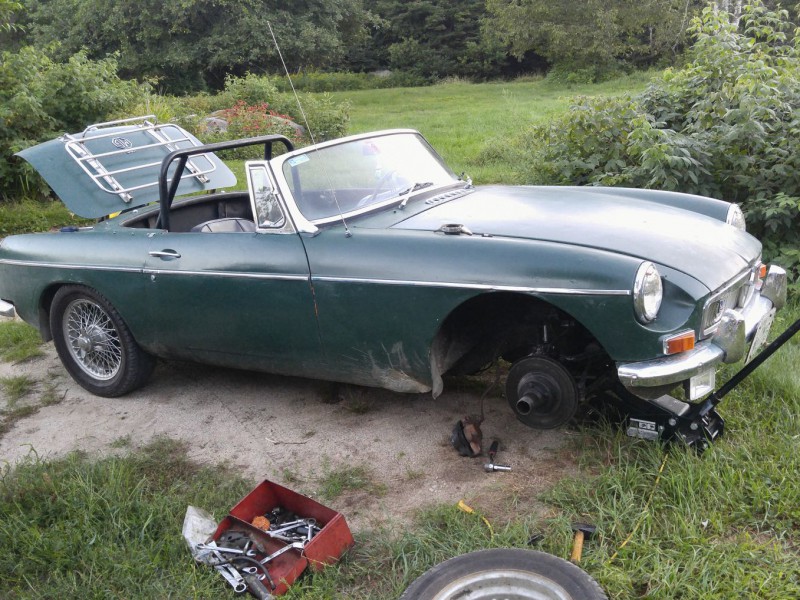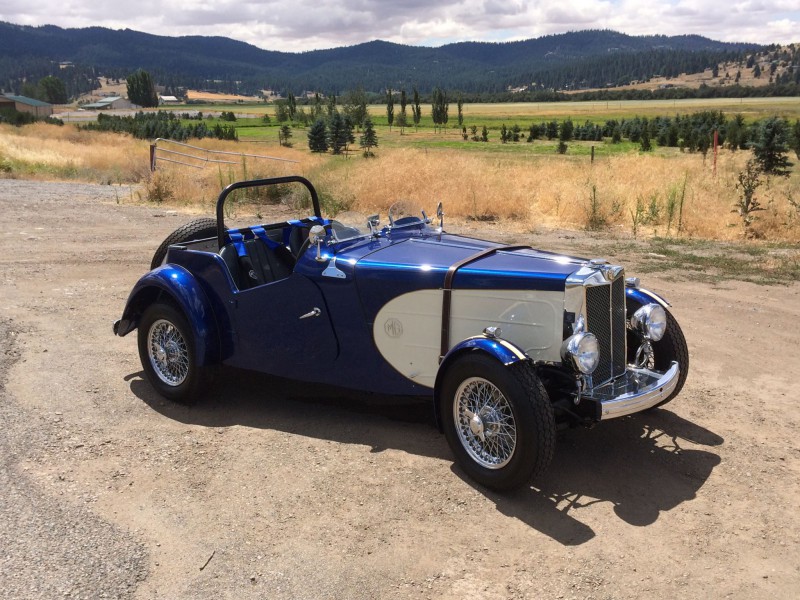Helping the New Generation: You Can Do This!
I read on one of the forums that I have to use British fuses in my Classic British car. Does that mean that British electricity is different than the electricity we have in North America? Is that why we had to buy an adapter for our personal electric devices when we went to Europe last year?
Yes and no. The electricity in your 12 volt Classic British car, is the same as the electricity you have in a 12 volt North American car of the same era.
That’s only true for our cars. The electricity we have in our homes and hotels in North America is 120 volts. In many other countries they have over 200 volts. So, if you went oversees and plugged your North American style hair dryer into the wall, it would live an exciting but short life.
However, the suggestion you heard about different fuses is correct. Why?
Most of the fuses you see in British and North American classic cars look like a small glass tube with chrome caps at the ends and a thin piece of metal running through the inside. The differences between British style fuses and North American style fuses are inside.
Terminology.
We usually talk about electricity using the term “volts.” That’s fine. Nonetheless, in a simplified way, volts really describes the ability of electricity to travel. It’s important to know the companion to volts is “amps.” The work is done by the amps. (Amps the short way of saying amperage. Amperage is the muscle part of electricity.) Amp flow is also called current. Our fuses are rated by how many amps they will allow to go through a circuit. If more amps are flowing than the fuse is rated to allow, the thin metal strip inside the fuse melts. We say the fuse has “blown.” That breaks the bridge and the flow of electricity is cut off.
Let’s assume you have a North American fuse rated at 15 amps. That means you can have 12, or 13, or 14 amps running through that circuit all day long with no issue. The fuse is designed to protect the circuit from any load that’s greater than 15 amps. Now, if there is a sudden load on the circuit, and are faced with a 16 amp or a 17 amp draw, that fuse will blow. That’s how a North American style fuse protects the circuit.
If a wire gets shorted or an electric device fails, we can get a flow of lots of amps. Wires will melt. A fire could start. That fuse is your protection.
If we are driving along and suddenly a fuse blows, we should first say “thank you” to the fuse. That self-sacrificing little guy may have just saved you hundreds of dollars in repairs and a tow charge.
- A fuse just blew: what to do now…
In theory, something bad just tried to happen. The fuse stopped it. We should go looking for the problem. However, most of us (including this automotive technician) will simply replace the fuse. That’s OK. Sometimes a fuse just gets tired or internally corroded. It can blow all by itself. Replacing the fuse will fix that.
Sometimes there is a real problem. There is a loose wire someplace. You just hit a bump in the street. That bump caused the wire to move and touch ground for a moment. That moment caused the fuse to blow. Looking for that problem with your car parked on the side of the road, may be fruitless. The loose wire may not touching ground right now. The circuit was only shorted for a moment.Of course, if you replace the fuse, and the replacement blows right away, you have a real and present problem. That problem will have to be addressed before you use that circuit again. Blown fuses are like canaries in a mine. They are telling you something is wrong.
What NOT to do.
This writer has a confession to make. This writer (as a younger man) was known to wrap a blown fuse, or two, with aluminum foil or gum wrapper. That carries current so the circuit can come back to life, but it also eliminates your circuit protection. You can cause a harness meltdown or a fire doing that. This technician got away with it most of the time. You may not.
It’s better to keep some spare fuses. Real fuses offer real protection. Bypassing a fuse creates a bridge where damage can enter.
Slow-blow vs. North American style
So, what about this difference between the factory fuses my Classic British car was meant to use and the fuses that most North American auto makers used?
The Classic British cars used what are called slow-blow fuses. They do the same job that North American style fuses do, but they are more patient.
A few paragraphs back, we talked about a North American style fuse that was rated at 15 amps. We said it will blow if it faces 16 amps. That’s true. Let’s assume we have a wiper motor. It’s got some leaves or snow that built up on the wiper arms. We turn the wipers on. For the first moment, the wiper turns slower than it should. It will draw more amps. The North American style fuse will blow.
Some people would feel the fuse didn’t really need to blow. They would say it just needed to wait another moment and everything would have been fine. That’s the thinking behind slow-blow fuses.
First thing to know. A slow blow fuse is rated differently than a conventional fuse. They tend to be rated at about double the rate of a North American style fuse. So, that North American style fuse rated at about 15 amps will be rated at about 30 amps in a slow-blow fuse.
When a 30 amp slow-blow fuse reaches a load in the 15 or 16 amp range, the fuse begins to blow. However, it takes a few moments. The fuse says, “I know we are at 17 amps. I know we are supposed to blow at 15 amps. But, I think that wiper arms might be covered in snow. I’m going to wait a moment or two. We are only past the limit by 1 or 2 amps. That’s not a lot. We can wait a couple of moments.” A moment later the wiper motor will be free. The extra load will be gone. All will be well. That slow-blow feature allows the wiper motor to come to life and not blow the fuse.
The slow-blow fuse will wait a couple of moments when 17 amps is going through. It will wait less if 20 amps is going through. If 30 amps tries to get through, the slow-blow fuse will blow instantly. That’s why they are rated differently. They blow instantly when the maximum load is reached. They will blow slowly when amperage near half the fuse’s rating is flowing. With more amperage, its patience dissipates.
No fuse.
Most cars have fuses in the headlight circuits. Initially, that makes sense. Virtually everything else in the car has a fuse, why not the headlights? It surprises many people, but the headlights in many of our Classic British cars have no fuses. That’s right. No fuse. No quasi fuse. No circuit breaker. No circuit protection of any kind. Raw unfused power travels from the unfused light switch to the unfused headlights. Why.
It has been suggested that this may buy you an extra moment of light. Imagine you are out in the middle of nowhere going fifty miles per hour in the middle of the night. You hit a small bump. A headlight wire is loose and it bumps against ground. If the circuit were fused, the fuse would blow. (In the event of a short circuit, even a slow-blow fuse will blow without delay.) Instantly, the lights would go out. You are going 50 MPH, in the dark, with no lights at all.
If the circuit has no fuse, the fuse can’t blow. That has a positive and a negative impact. The negative impact is clear. If there is a short circuit, we are going to melt a wiring harness. A tow truck will be needed.
However, if there is no fuse, and there is a short, the headlamps will dim. Even dimmed, they will give some light for a moment or two. That will give you a chance to apply the brakes and slow the car. It will give you an instant to record a mental image of the road. That tiny bit of time can help you avoid an accident. Thinking of it like that, a burned harness and a tow truck are a small price to pay to avoid an accident.
Can I use a North American fuse in my Classic British car?
Well, since almost everybody has already done it, the answer is self evident. There are just two things to keep in mind.
1 The slow blow feature of the slow-blow fuse will be gone if you use a North American style fuse.
2 Remember the slow blow fuse will begin to slow blow at about half its rating. So if you have blown a 30 am slow-blow fuse, and you want to use a North American style fuse in its place, make sure the North American style fuse is rated at about half what the recommended slow-blow fuse was rated at.
Important- If a 30 amp slow-blow fuse is replaced with a 30 amp North American style fuse, that new fuse would tolerate 28 amps all day long and not blow. That would be going on in a circuit that was designed to carry a maximum of 15 amps. If something goes wrong, we can have enough amps to damage wires, but not enough to blow the 30 amp North American style fuse.







'Moss Tech 101: Don’t Blow a Fuse Over Your Fuses' has 1 comment
April 22, 2022 @ 7:40 pm John Causey
This explanation was exactly what I needed. My ’78 Triumph Spitfire blew the bottom old British fuse, which among other things disabled to hazard lights. Research confused me with two different amp ratings to be used for the replacement fuse. Now I know about slow and fast fuses. Thank you